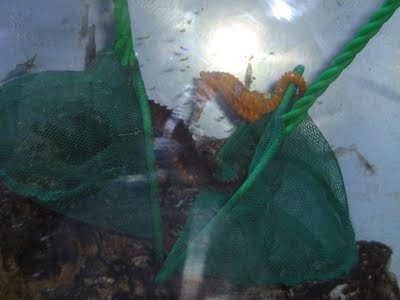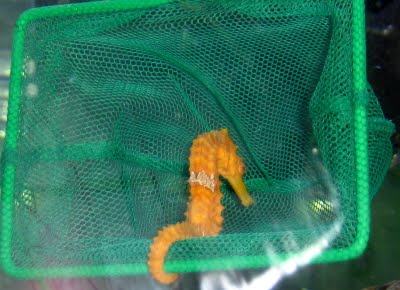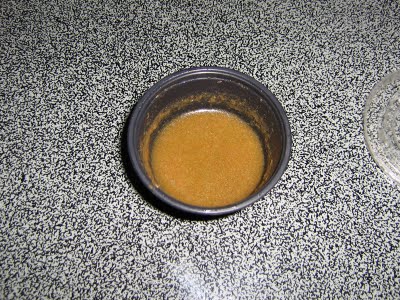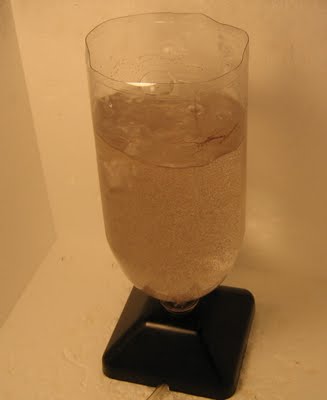One of the most challenging task for a seahorse keeper is feeding. Seahorse can be very difficult to feed. Some will take frozen readily while others will only eat live food. To add to the difficulty seahorse are very slow eaters.
We came up with an idea how to feed the seahorse. Typically you can dump the brine shrimp in to the tank and hope they swim to the seahorse, they usually swim the other direction. We leave the shrimp in the net and have trained the seahorses to come perch on the net and eat like a horse with a feed bag. Sometime this does not work, if the shrimp catch the right current the get out of the net.
Sometime this does not work, if the shrimp catch the right current the get out of the net. Other times the shrimp stay at the bottom of the net and the seahorse get every one.
Other times the shrimp stay at the bottom of the net and the seahorse get every one.
 Only one shrimp left!
Only one shrimp left!

 Now that they are drained and washed with RO water, we put them a small container and feed them vitamins to gut load them. I’m not sure if the eat the stuff or it just gets soaks in. Baby brine are really small, not much bigger than copepods. In addition to the baby brine, Mini also gets a mixture of frozen phytoplankton, rotifers, cyclopeezes, baby brine and vitamins. We feed her about 4 times a day.
Now that they are drained and washed with RO water, we put them a small container and feed them vitamins to gut load them. I’m not sure if the eat the stuff or it just gets soaks in. Baby brine are really small, not much bigger than copepods. In addition to the baby brine, Mini also gets a mixture of frozen phytoplankton, rotifers, cyclopeezes, baby brine and vitamins. We feed her about 4 times a day. It is also important not to make too much food at one time, this is more than enough for a few days. Also important is to make sure the water quality remains good in Mini’s tank. After each feeding the tank is cleaned up and the water is changed out with the main tank. Any remaining food goes to the clean up crew.
It is also important not to make too much food at one time, this is more than enough for a few days. Also important is to make sure the water quality remains good in Mini’s tank. After each feeding the tank is cleaned up and the water is changed out with the main tank. Any remaining food goes to the clean up crew.


